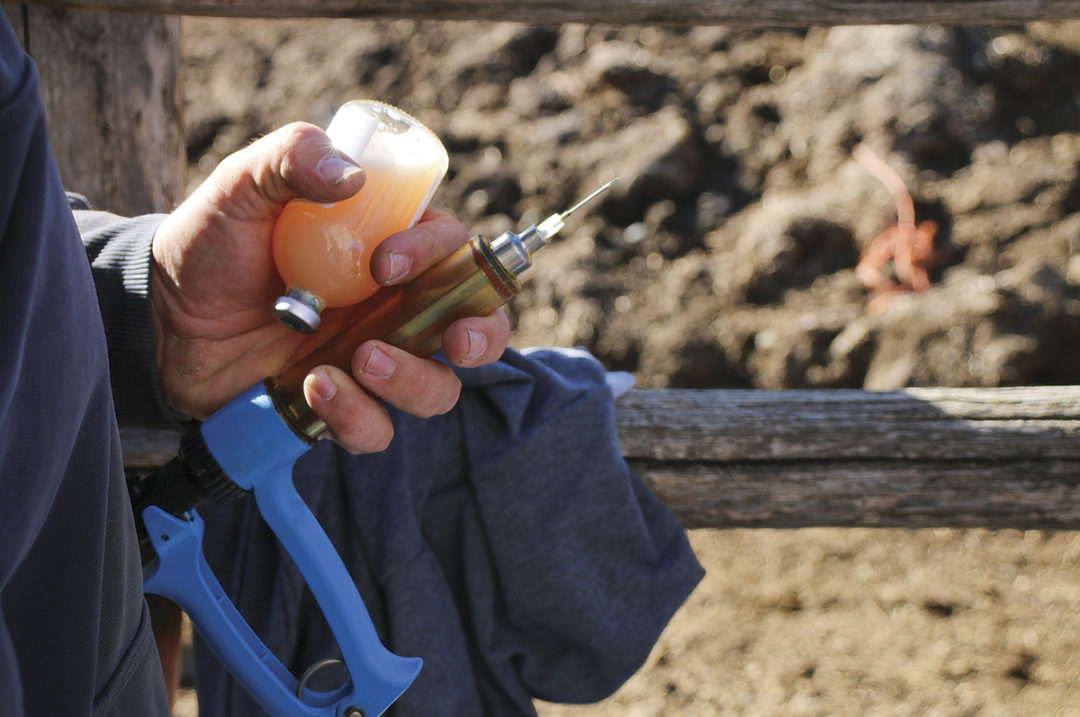When it comes to timing vaccinations, as the old adage goes, timing is everything.
“You can select the correct vaccines to protect cattle against the diseases they are most likely to encounter, but if you give it at the wrong time, it doesn't have a chance to work,” says Lacey Fahrmeier, Valley Vet Supply technical service veterinarian. “Keep in mind that once you administer the vaccine, they are not instantly protected for that disease. Think of the immune system as a production line of sorts. They need time to respond to that vaccine, make those antibodies and then have enough of those antibodies to be protective.”
Fahrmeier shares how the immune system develops immunological memory for the disease to then be able to respond later to a natural challenge.
“Administration of a vaccine is referred to as active immunization, but it isn't the only way to immunize an animal. Cattle can also be passively immunized by the transfer of antibodies and colostrum from their mother, as one example. This type of protection is immediate because those cells cross the lining of the intestines and because the antibodies don't need to be manufactured. But it's also very short-lived because the antibodies eventually degrade,” Fahrmeier explains. “Active immunization, on the other hand, is relatively slow to form, but it's much stronger and longer lasting than passive immunization.”
Determine timing
“Timing is paramount to consider as we look at developing vaccination protocols for cattle because we need to match that strategy to the anticipated challenges in a specific class of cattle. We also need to position that vaccination event well before that challenge to allow the animal to build the appropriate immune response to that vaccine,” says Catherine Maguire Dowling, with Zoetis beef technical services.
Be sure to factor in the time needed to best optimize protection. “You want to make sure that your cattle have been immunized at least three to four weeks prior to when you expect them to be stressed or challenged because, in most cases, it takes at least two weeks for the animal's own immune system to develop those valuable antibodies that will help protect them,” Fahrmeier says.
Vaccinating too early or too late can each pose its own unique challenges. “A vaccine given too early would result in an immune response in an animal that may essentially run out of steam, so to speak. Without exposure to either a natural disease challenge or a booster vaccination, that animal is basically telling us we don't need to maintain this response forever,” says Maguire Dowling. “Another way to take ‘too early’ might be too early in life. We know that very young calves have an immature immune system. It's functional, but it is immature, so that changes both the extent and duration of the immune response to some vaccines in those very young calves as compared to more mature cattle.”
This principle is referred to as the duration of immunity following a vaccine, which is sometimes abbreviated as DOI. The DOI has been measured out to about a year for some commercially available vaccines when given according to label instructions. It’s important to refer to the vaccine label.
By postponing vaccination events, “Producers risk running into the ‘too-late’ situation and risk disease exposure in either naive or suboptimally protected animals,” says Maguire Dowling.
If a booster is needed, the label will illustrate proper timing. And, in the landscape of commercial vaccines, timing needs can vary.
Fahrmeier shares that the first dose of a vaccine, known as the primary immune response, can be slow to develop and produce relatively small antibody levels. “The antibody titer also decreases rather quickly. The secondary response – or the booster, usually given two to four weeks after that initial injection – occurs much more rapidly, achieves higher antibody levels and lasts much longer. This is why boosters, especially with killed vaccines, are really critical to their effectiveness.”
Involve your veterinarian
For proper timing, keep in mind that disease challenges vary by pathogen and risk of infection to said pathogen, across every sector of the cattle industry.
“We focus on not only vaccine selection but also certainly timing based on the challenges presented to different classes of animals on different operations. Therefore, there are many factors, including age management, marketing modalities and more that would influence timing,” says Maguire Dowling. “I would encourage producers to work with their respective herd veterinarians and trusted animal health partners to develop those strategies, taking all those factors into consideration – particularly around timing – to match the needs of their cattle.”
Help your veterinarian help you by providing them with the details they need to best develop a program tailored to your operation.
Fahrmeier shares, “To help your veterinarian design the most appropriate plan for you, discuss your goals in terms of when you are planning to breed, your calving window and then also, logistically, when it's possible for you to physically get the vaccines in the cattle. Maybe you're someone who farms or has other aspects that are challenging to your schedule. Making your veterinarian aware of those issues so you can try to mitigate them and create a plan that is feasible for you to implement is crucial to success.
“To assist your veterinarian in developing the most effective protocol for your herd, be prepared to provide them with information regarding your specific production system such as: When is your calving season? When are you weaning? Are you backgrounding them at home, or are those calves going right off the cow and onto a truck? When are you able to pre-check? Are you able to handle the calves at birth, and is that something that you want to do? I would say those are the most important management factors that might determine the timing of when you should get these vaccines into cattle so that they have protection when they're faced with stress and challenges.”









